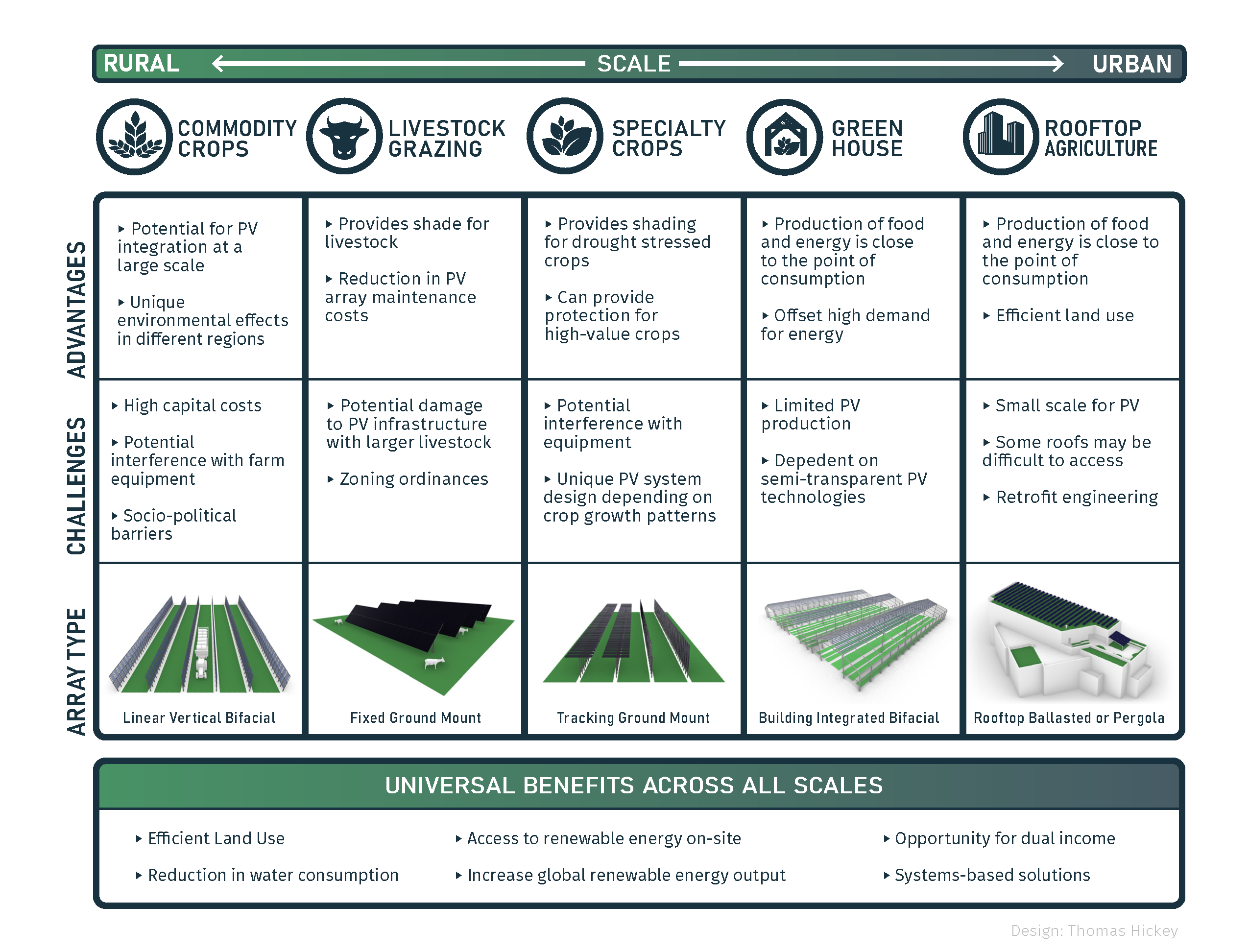Agrivoltaic opportunities: Grazing livestock in solar energy systems
Increasing community support for agrivoltaics, the practice of farming in and around solar projects, provides an opportunity for solar developers and the Michigan sheep industry to collaboratively meet the market demand for a steady supply of quality lamb.

Livestock are a very effective vegetative management tool for community and utility solar energy systems. Cattle are grazed in some solar projects, but typically it is sheep that are used to control vegetation growth because they can easily maneuver underneath and around solar arrays. While sheep will happily eat many types of weeds and invasive plant species, weeds do not produce the type of pasture that sheep producers need to produce a marketable lamb in a reasonable time period. A solar site planted with a pasture mix and designed to allow for creep feeding produces what the market wants: a 130-pound lamb that will yield grade 2-3. The question now is what human, knowledge and financial resources do we need to get there?
Community priority
Just as community support is vital to the success of a solar project, so too is community support for integrating agriculture into a solar project. This dual use practice is known as agrivoltaics. Figure 1 provides a visual perspective of scale, array type, and challenges and advantages for various agrivoltaic configurations. Communities best suited to agrivoltaics have zoning ordinances in place that provide clear guidance for incorporating agricultural production in and around solar sites. One study assessed public support for solar development and found that 81.8% of the survey respondents would be more likely to support solar development in their community if it integrated agricultural production. Agrivoltaics is not a panacea for all farmland conservation or solar development needs, but it is a potential tool in the toolbox for meeting climate goals, supporting farmers by keeping farmland in production, and supporting the economies of rural communities.

Solar developer support
Solar developers who understand the value of solar grazing and are willing to fairly compensate farmers for their expert services are the second ingredient vital to agrivoltaic implementation. Many solar companies such as Silicon Ranch, Lightsource bp, Pivot Energy and Lightstar Renewables are experiencing the benefits that grazing sheep can offer their solar projects. Referencing these companies should not be construed as an endorsement by Michigan State University Extension but rather an invitation to other solar developers across the industry to examine the positive role agriculture might play in their own solar projects.
Sheep producer expertise
The final component is a shepherd who can competently and confidently manage sheep grazing in a solar project. While grazing sheep in a solar project is not overly onerous, it does require planning and skillsets beyond simply putting up temporary fencing and moving sheep around the site. Shepherds interested in gaining the skills necessary to realize the promise of solar grazing can take a course to receive the American Solar Grazing Association Certification for Solar Grazing. Efforts are underway by Michigan State University Extension and United Agrivoltaics Heartland Alliance (UAHA) to offer a course this winter. For more information about the certification program, contact UAHA Executive Director Samantha Craig at 269-528-1409 or info@uaheartland.org.
Agrivoltaics offers an opportunity for solar developers, communities and shepherds to work together in ways that provide environmental, food security and economic benefits across sectors. Solar grazing, as a dual land-use, allows the Michigan sheep industry to meet the market demand for lamb, support rural economies, and keep farmland in production all while supporting the production of green energy. No one loses in this arrangement.
If you have questions about solar grazing opportunities, please contact Charles Gould, Michigan State University Extension bioenergy educator, at 616-834-2812 or gouldm@msu.edu. The Michigan State University Extension Agricultural Bioenergy and Energy Conservation website has additional information on renewable energy.



 Print
Print Email
Email




